8 DIY Mosquito Traps You Can Try Today (With Pictures)
-

- Last updated:
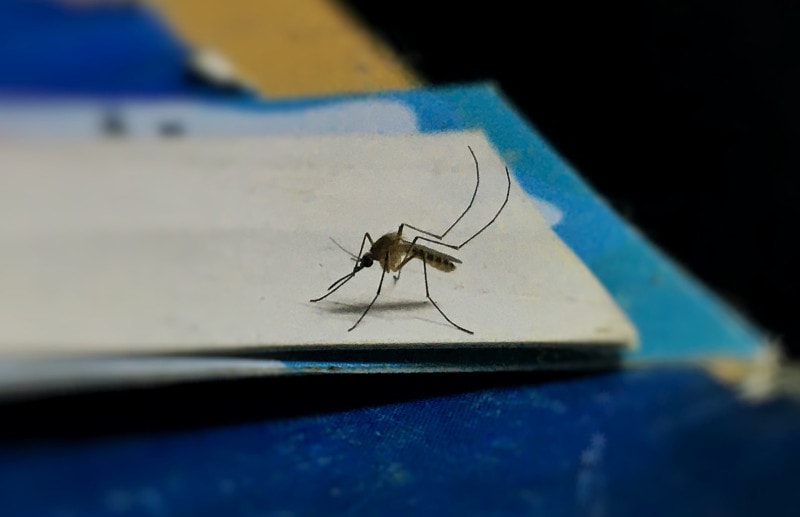
Mosquitoes are a nuisance. Not only do they get in your face and act like pests, but their bites can cause unhealthy reactions and even spread disease. Whether you’re trying to sit out and enjoy a relaxing dinner or are on a camping or fishing trip, you will want to find a way to control these flying pests.
Commercial traps are available and utilize a vast range of attraction and trapping techniques, but they can be expensive, have varying capture rates, and you may not always have access to somewhere that sells them. Fortunately, there are also plenty of DIY mosquito traps that you can make yourself, typically using items that you have laying around.
Unfortunately, mosquitoes are highly skilled hunters. They can detect the carbon dioxide we exhale before being attracted to the natural scent our skin gives off. They are also seemingly better equipped at evading traps. Below, you will find details of eight DIY mosquito traps that are easy and inexpensive to make, giving you a host of weapons in your mosquito-fighting arsenal.

The 8 DIY Mosquito Trap Ideas
1. Mosquito Trap

| Materials: | Soda Bottle, Scissors, Tape, Water, Sugar, Yeast |
| Difficulty: | Easy |
A lot of DIY mosquito traps use empty plastic soda bottles. They’re cheap and readily available, and it’s good to reuse or upcycle used plastic whenever possible. They’re also easy to work with, so the only tool you really need to be able to modify a plastic bottle is a pair of scissors. Plastic bottle traps typically use the same design, with the bottle cut in half and the top section inverted and placed into the bottom. A liquid attractant is then placed in the bottom.
In this DIY mosquito trap, the trap uses yeast, sugar, and water. The mosquitoes and other flying pests fly in to investigate the alluring aroma, and then can’t get out, eventually drowning in the liquid. It’s easy to make and plenty of people enjoy success in controlling their population of mosquitoes and other pests.
2. DIY Mosquito Trap

| Materials: | Soda Bottle, Scissors, Tape, Black Paper, Water, Sugar, Yeast |
| Difficulty: | Easy |
This DIY mosquito trap is essentially the same as the one above, but it uses black paper to cover the trap. Mosquitos prefer dark environments, which means that they will be more inclined to fly into the darkened trap. The instructions also provide more details on creating the sugar, yeast, and water mix, and using warm water to help dissolve the sugar fully.
3. Pesticide Free Mosquito Trap
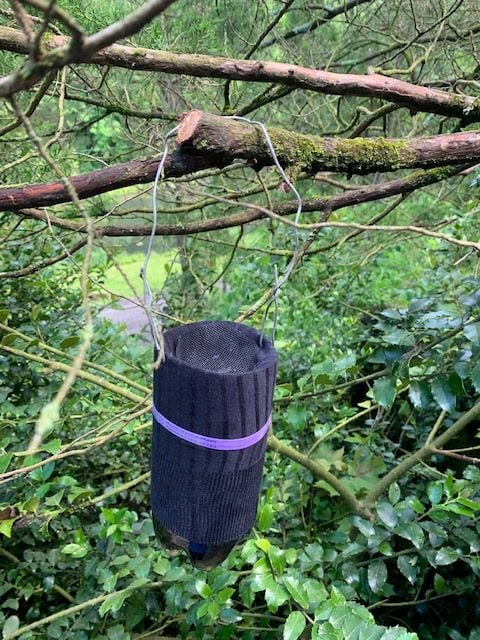
| Materials: | Soda Bottle, Scissors, Tape, Black Sock, String, Rubber Band, Stagnant Water, Window Screen |
| Difficulty: | Easy |
The pesticide-free mosquito trap is another that uses an empty soda bottle for the main construction. This one includes instructions on how to add a string so that the trap can be hung from a tree, a tent opening, or a hook outside your home. It also uses a sock rather than black paper to create a dark environment.
Socks don’t break down as easily as paper when they get wet. Rather than using a sugar water mix with yeast, it also uses stagnant water and offers details of a replacement if you don’t have easy access to a stagnant water supply.
4. Skeeterbag Mosquito Trap
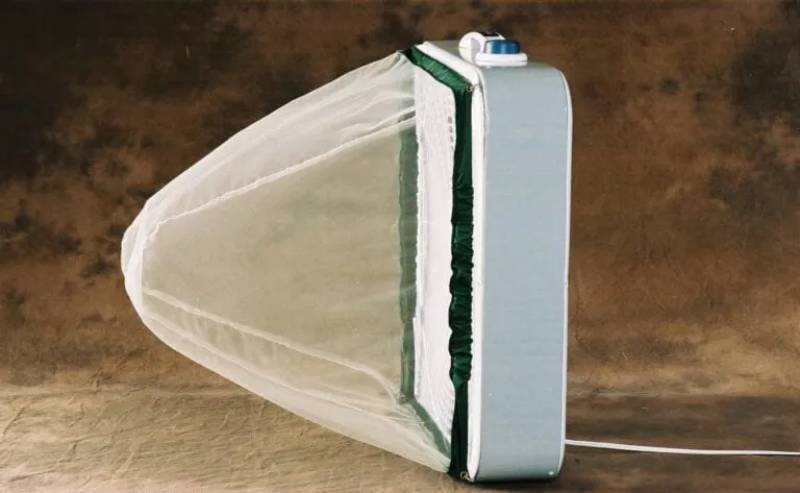
| Materials: | Skeeter Bag, Box Fan |
| Difficulty: | Easy |
Another common design in mosquito traps is the fan design. Essentially, mosquitoes are attracted to the back of an open fan and as air is sucked into the fan blades, so too are mosquitos. They are then propelled in front of the fan. This particular trap uses a skeeter bag, which is clipped onto the front of a 20-inch box fan so that the skeeters are blasted into the bag. They can’t escape and will eventually die. It’s simple to make, although you do need to buy the skeeter bag and the box fan.
5. Mosquito Killing Ovitrap
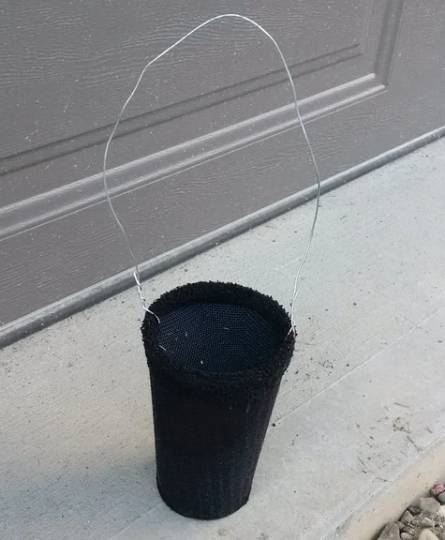
| Materials: | Plastic Container, Black Socks, Silicone Glue, Metal Screen, Wire |
| Difficulty: | Easy/Medium |
Apparently, ovitraps are used in military installations and are highly effective at trapping and killing mosquito populations. They offer a medium to long-term solution because they attract pregnant females and kill the larvae as they hatch.
Commercial ovitraps use poison, but this DIY ovitrap uses a moist sock. The pregnant mosquito lays its eggs on the sock, and when the larvae hatch, they fall through the mesh and into stagnant water below. Once the mosquitoes are big enough to fly, they can’t get back out through the mesh and die.
6. Non-Toxic Mosquito Trap
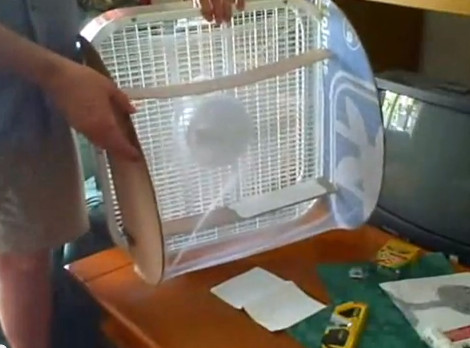
| Materials: | Box Fan, Cardboard, Mosquito Net, String |
| Difficulty: | Easy/Medium |
This non-toxic mosquito trap works similarly to the skeeter bag mosquito trap, doesn’t require any sewing, and uses what is essentially veil material as a mosquito net. The trap is apparently most effective in enclosed spaces where the mosquitoes will naturally end up flying behind the fan. They are trapped inside the net where they dry out and die.
7. DIY Mosquito and Fly Trap
| Materials: | Box Fan, Mesh Screen, Tape |
| Difficulty: | Easy |
This is another box fan design but rather than using a mosquito net, it uses a mesh screen, and, as long as you can use sticky tape, it is easy to make. It is effective at catching most flying pests. While mosquitoes are more cunning than other flies, it will help reduce the mosquitoes in your room.
8. Fan Mosquito Trap
| Materials: | Fan, Tutu Fabric, Needle, Thread |
| Difficulty: | Medium |
If you have basic sewing skills or are willing to learn, and a tutu that you’re willing to sacrifice, you can use basically any fan to make your own mosquito trap and this fan mosquito trap tutorial shows you how. The more powerful the fan, the greater distance the trap will cover and the quicker it will dry the mosquitoes out. As is true with most of these fan-based designs, any mosquitoes that have not died will be able to escape when you turn the fan off, so be warned.
Conclusion
Mosquito repellents are notoriously hit and miss when it comes to actually deterring flying pests, primarily because the mosquito’s natural ability to detect carbon dioxide and human skin far outweighs their desire to avoid citronella and cloves. Commercial traps are available, but they can be extremely complex and cost a lot of money.
Try using the eight DIY mosquito traps above, most of which use items that you likely have around the house or can easily and cheaply source at local stores, before moving on to potentially more expensive and complicated devices.
Featured Image Credit: Mithil Girish, Unsplash
Contents

